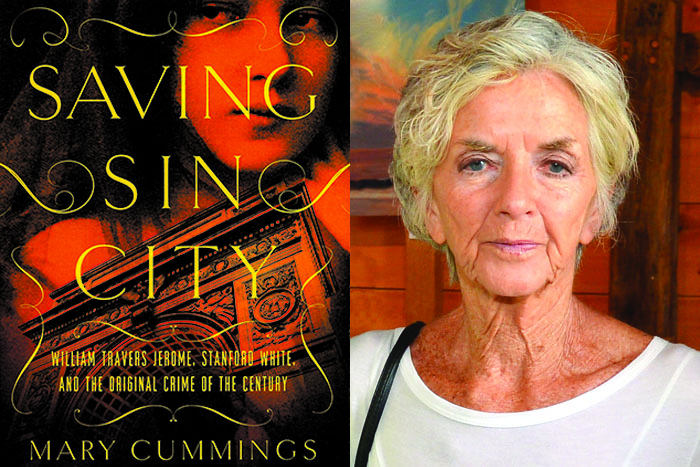Book Review: 'Saving Sin City' by Mary Cummings Satisfies

Local journalist Mary Cummings’s retelling of a scandal that took place in early 20th century New York City is provocative and enthralling. Cummings is a historian as well as a writer and her work has been recognized by the New York Press Association. She is also the author of three books on local history. Now, Cummings is focusing on a crime that’s known as one of the most shocking in American history in her book Saving Sin City.
Though the crime at the center of the book took place over 100 years ago, the story still feels relevant in the way Cummings brings in the backstory that leads to the murder of a prominent architect. In many ways the tale is timeless: a love triangle turned deadly, filled with greed and envy, beautiful women and powerful men. But it’s the politics behind the different players involved in the crime that reminds the readers of stories we hear on the news in the present day.
This book is dense. There’s a lot of backstory and the plot doesn’t pick up until about midway in. But Cummings’s writing is clear and the narrative flows well as she brings in quotes from newspapers and other sources, though it’s difficult to stay within the world of the book when legal jargon is used. We begin in the year 1901 and end in 1908.
Evelyn Nesbit and Stanford White’s relationship is disturbing and difficult to read about, but it’s the most interesting plot point up until the murder of Stanford White. White was a prominent architect (you can still see some of his designs on the East End today) who was once involved with his murderer’s wife. White is a complex character who is easy to hate. He has a Weinstein quality about him. White rapes 16-year-old Evelyn Nesbit after her mother goes out of town, having left Nesbit in his care. Nesbit, whose family is poor and for whom she is the sole provider, is at first traumatized by the sexual assault but then is forced to evaluate the consequences of turning a man like White away. White ends up taking care of Nesbit’s family financially, and Nesbit becomes his lover.
In the story that builds to the murder of White by Nesbit’s husband Harry K. Thaw, we also learn about the man who will prosecute the case. A moral man with an activist past, William Travers Jerome is not afraid to fight the wealthy and corrupt to get justice for those who deserve it. He’s ambitious and righteous; an easy character to sympathize with. His presence adds a new dimension to a story that otherwise may read like a soap opera. Jerome’s history helps shed light on the complicated social issues that underline the tensions that lead to this violent act. In addition to Jerome’s background, we get a look into Thaw’s. He, like his victim, White, is an easy character to hate and becomes obsessed with Nesbit, eventually making her his wife.
Cummings tells this story so that it feels relevant to issues currently at play in society. From the sexual assault against Nesbit, to the corrupt officials in government and the neglect of the poor, it isn’t hard to see how what happened during this period has resonance in the 21st century. This novel is filled with interesting characters; they aren’t simply good or evil. Their past experiences, which Cummings explores, explain how they became who they are when the murder of White occurs and help the reader to stay invested in the story. If you enjoy a bit of history, with all the drama and scandal that comes in a work of fiction, Saving Sin City satisfies.
Mary Cummings’s latest book Saving Sin City is available now from your local, independent bookstore.



